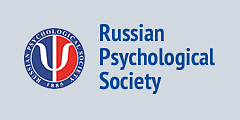Psychology in Russia: State of the Art, Moscow: Russian Psychological Society, Lomonosov Moscow State University, 2020, 3

2020
Volume 13 (03)
Volume 13 (03)
Clinical psychology
-
Distress Screening in Russian Pediatric Oncology: Adaptation and Validation of the Distress Rating Scale
-
Elaborating Screening Scales for Early Diagnosis of Developmental Delay in Five- to Six-Year-Old Children in Russia
-
Beck’s Personality Beliefs Questionnaire: Evidence of Validity and Reliability of the Russian Version
Organizational psychology
-
A Pilot Study to Assess the Psychometric Properties of the Job Apathy Scale with Russian Employees
-
Who Benefits from Environmental Identity? Studying Environmental Identity and Mental Wellbeing in Russia
Social psychology
-
The Relationship Between Human Values and Acceptability of Corruption in Russia and Greece
-
Practical Universalism and Multiple Social Categorization: Can Different Social Biases Counterbalance Each Other?
Educational psychology
-
The Construct Validity of the Russian Version of the Modified Academic Self-Regulation Questionnaire (SRQ-A) among Elementary and Middle School Children
-
Perceived Paternal Attitudes Predict Test Anxiety Beyond the Effect of Neuroticism: A Study in the Context of University Entrance Examination in TurkeyPDF HTML5803“ CITE
Akyunus, M., Canbolat, F., Altınoğlu-Dikmeer, I., Koca-Atabey, M. (2020). Perceived Paternal Attitudes Predict Test Anxiety Beyond the Effect of Neuroticism: A Study in the Context of University Entrance Examination in Turkey. Psychology in Russia: State of the Art, 13(3), 3-15.
copied
-
‘Diagnosis of Basic Learning Skills Task Battery’ Modified for Engineering Students









